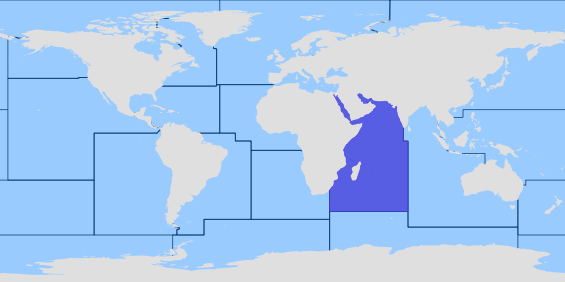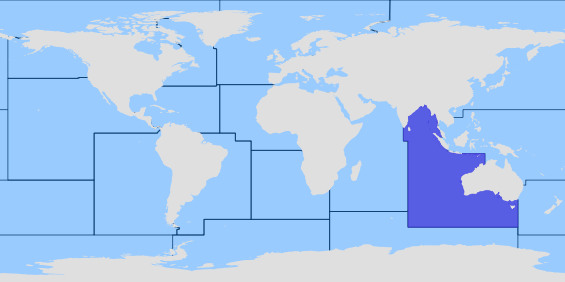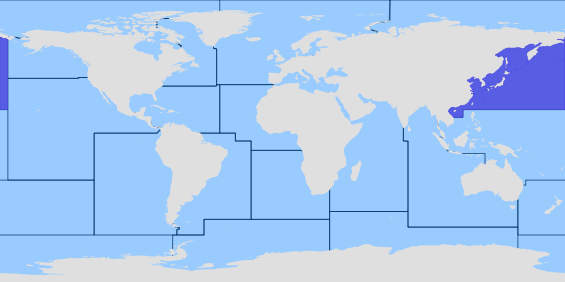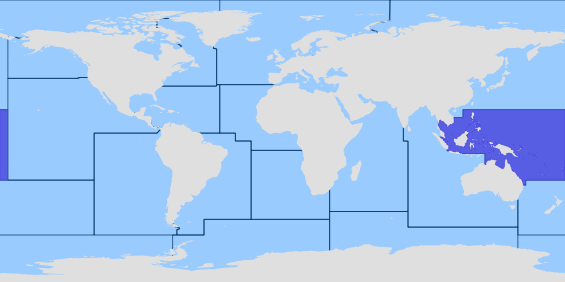anglųThe carapace has the median teeth before the crevical groove blunt and inconspicuous: the rostral tooth is reduced to a tubercle, the pregastric tooth is replaced by a double row of 1 or 2 tubercles and a few inconspicuous median tubercles. The gastric tooth is the most conspicuous, it isbroad and blunt and bears a double row of tubercles. The surface of the carapace is very uneven and the tubercles are high. Between the postrostral and branchial carinae there are a few tubercles and many smooth areas. The abdomen shows a distinct median longitudinal carina on somites 2 to 5, that of somite 3 is by far the highest, and (like the one fo somite 4) bears numerous tubercles laterally. Somite 1 is quite smooth, and has the transverse groove only slightly noticeable in the extreme lateral parts. The exposed part of the following somites show no arborescent pattern, but in each somite there is a wide transverse groove there. In somite 2, both before and behind this groove there is a perfectly smooth broad ridge, a character in which the species differs from most others. In the following somites these ridges are tuberculate. In somites 4 to 6 the posterior margin is tuberculate. The fourth antennal segment has a sharp and high oblique median carina. Outside the carina the upper surface of the segment shows a row of tubercles. The outer margin of the segment bears 4 or 5 teeth (apical tooth of the segment not included), the inner margin has 5 to 7 teeth of irregular size. The anterior margin of the thoracic sternum is deeply U-shapedly incised. Each of the thoracic sternites bears a rounded median tubercle. The dactyli of pereiopods 3 to 5 show two short fringes of hair each. Colour: the dorsal surface of the body is greyish or purplish brown with darker spots. The distal segment of the antenna is often lighter. The first abdominal somite shows dorsally often a dark blue colour (Ref. 252).
Rodyti Vertimas
Išvertus iš anglų iš "Bing"
Šis vertimas tik orientacinis: dėl ribotos kokybės originalaus teksto, morfologiniai aprašai pateikiami tik anglų kalba sistemos BETA versijoje. Informacija įvairiomis kalbomis bus tik būsimose laidose.
lietuviųKiaukuto turi vidurinės dantų prieš crevical griovelis bukas ir neišsiskiriantis: rostral dantis yra sumažintas iki, tubercle, pregastric dantis yra pakeičiamas dvigubą eilę 1 arba 2 tubercles ir keletą neišsiskiriantis vidurinę tubercles. Skrandžio dantis yra labiausiai matomoje vietoje, ji isbroad ir bukas ir neša dvigubą eilę tubercles. Kiaukuto paviršius labai netolygus ir į tubercles yra didelis. Tarp postrostral ir branchial carinae yra keletas tubercles ir daug sklandžiai srityse. Pilvo rodo atskiras vidurinės išilginės carina somites 2-5, kad somite 3 yra bene didžiausias, ir (kaip vienas fo somite 4) tenka daug tubercles į šonus. Somite 1 yra gana sklandžiai, ir yra tik šiek tiek pastebimas skersinės groove extreme šoninės dalys. Veikiami dalis šių somites neparodė jokios Sumedėjančių augalų tendencijos, tačiau kiekvieno somite yra plačiai skersinės griovelis ten. Somite 2, tiek prieš, tiek už šis griovelis yra tobulai lygus, plačios keteros, kurioje rūšių skiriasi nuo daugumos kitų simbolių. Šie somites šių kalnagūbrių yra tuberculate. Somites 4-6 užpakalinės skirtumas yra tuberculate. Ketvirtoji antennal segmentas yra staigus ir didelis pasviręs vidurinės carina. Už carina viršutinio paviršiaus segmento rodo tubercles eilutę. Išorinis skirtumas segmento tenka 4 ar 5 dantis (viršūnės dantų segmento neįtraukti), vidinis skirtumas yra 5-7 dantų nereguliarios dydžio. Priekinį krūtinės ląstos krūtinkaulio skirtumas yra giliai U-shapedly įpjauti. Visų krūtinės ląstos sternites neša suapvalinti vidurinę tubercle. Pereiopods 3-5 dactyli rodo dvi trumpas pakraščiuose plaukų kiekvienam. Spalva: kūno nugaros paviršiaus yra pilkai arba rausvai ruda su tamsesnės dėmės. Distalinio segmento antenos dažnai yra lengvesni. Pirmasis pilvo somite išilginiais dažnai rodo tamsiai mėlyną spalvą (Nuor.: 252).
 Nuotraukos nėra
Nuotraukos nėra


